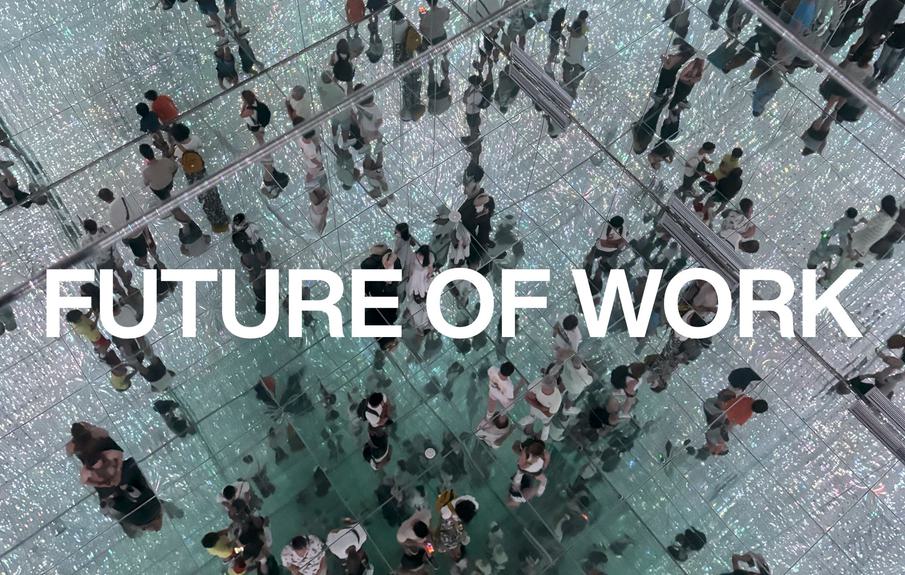
Peopledesign
The Built Environment
Furniture
Lighting
Textiles/Upholstery
Flooring/Carpet
Building Materials
AE Firms
The Future of Work 2025
Future of Work 2025
The reshuffling of knowledge work continues. What are the opportunities?
The COVID-19 Pandemic lit the dry kindling of emergent work-from-home (WFH) trends. The technology arrived just in time, creating a white-collar teleconference culture.
Employees pushing and employers pushing back add friction, and hyperbolic AI promises to add gasoline to the fire. Companies in the built environments industry, particularly those serving commercial office spaces, feel the heat. Companies focused on the workplace should have answers.
Furniture companies claim to know about work, but most of their insights are about hard goods. As an industry, we may know less than we thought about the true nature of work.
One thing is certain: the future of work will come from outside our industry, emerging technology, and the changing cultural reality of work. Starting with email, document sharing, SaaS platforms, web calls, chat agents, machine learning, and AI, more than ever, work may be less about furniture than we’d like.
Work is about more than furniture, but it’s not all software. As an industry, we have retracted some of our worker productivity claims of the ’80s and ’90s to focus on ergonomics, hospitality, wellness, and culture. That might be a good thing.
WORKPLACE COMPANIES SHOULD HAVE ANSWERS.
Whatever AI-augmented reality emerges in the next decade will impact how we communicate, entertain ourselves, and work. This larger digital transformation bundle will test our cultural norms. Zealots and Luddites will push the extremes, and the middle will shift toward what’s most effective and economical.
In the end, as in the beginning, human concerns outlast technological change.
There is no one way to be productive. Individual preferences, group behaviors, and cultural norms all impact productivity. We are still determining how we will change based on what is available or will become socially acceptable.
HUMAN CONCERNS OUTLAST TECHNOLOGY CHANGE.
How we measure productivity is itself a mystery. You can measure widget production in a factory, but measuring the value of good ideas is a different story.
The assembly line is less and less appropriate as a metaphor for how we live. Work, healing, and learning don’t work that way. Knowledge work is primarily qualitative rather than quantitative, so it’s hard to contain within 40 hours, an hourly rate, or four walls.
The future is hard to predict, but let’s state what we know and what it might be like at the beginning of 2025. Change can be uncomfortable, but let’s explore the challenges and opportunities.
ARE YOU READY TO EMBRACE A NEW FUTURE?
Explore these ideas and more by downloading the full article.
👉 Rethink the office business.
👉 Find new workplace targets.
👉 Lean into a WFH future.
👉 Create a foundation for hybrid work.
👉 Support in-between work.
👉 Deepen workplace consulting.
👉 Make a case for place.
👉 Get to end-user customers.
👉 Create office destinations.
Complete the form below to download the full article.
